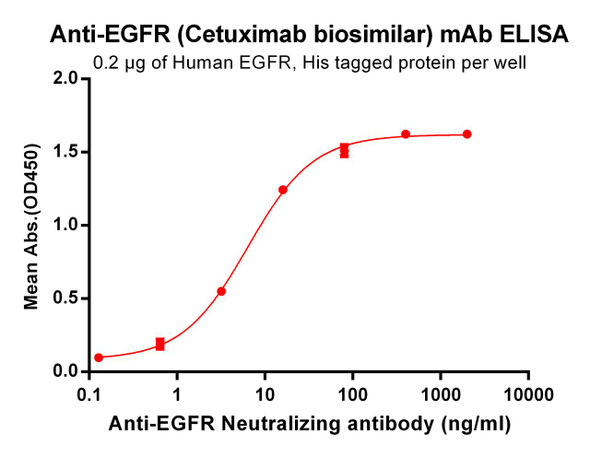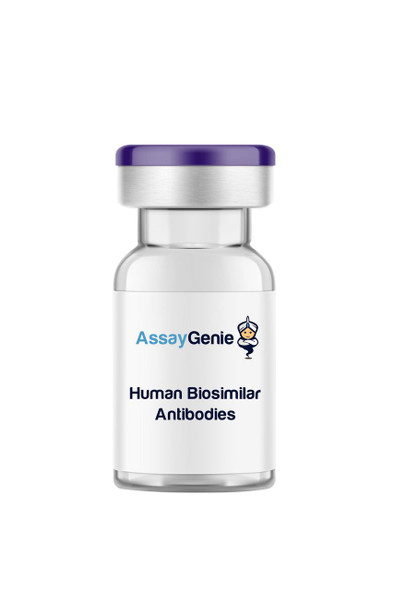Description
| Product Name: | Anti-Human EGFR (Cetuximab) - PE |
| SKU: | IVMB0513 |
| Size: | 50 µg |
| Antibody Type: | Biosimilar Recombinant Human Monoclonal Antibody |
| Clone: | C225 |
| Target: | EGFR |
| Isotype: | Human IgG1κ |
| Host Species: | Human |
| Reactivity: | Human |
| Applications: | FC |
| Expression Host: | HEK-293 Cells |
| FC Effector Activity: | Active |
| Synonyms: | ErbB-1; HER1; epidermal growth factor receptor |
| Product Concentration: | 0.2 mg/ml |
| Excitation Laser: | Blue Laser (488 nm) and/or Green Laser (532 nm)/Yellow-Green Laser (561 nm) |
| Immunogen: | Human EGFR/ErbB1 |
| Applications and Recommended Usage: | FC The suggested concentration for Cetuximab biosimilar antibody for staining cells in flow cytometry is ≤ 1.0 μg per 106 cells in a volume of 100 μl. Titration of the reagent is recommended for optimal performance for each application. |
| Antigen Distribution: | EGFR is ubiquitously expressed and found in the plasma membrane. |
| Formulation: | This R-phycoerythrin (R-PE) conjugate is formulated in 0.01 M phosphate buffered saline (150 mM NaCl) PBS pH 7.4, 1% BSA and 0.09% sodium azide as a preservative. |
| Specificity: | This non-therapeutic biosimilar antibody uses the same variable region sequence as the therapeutic antibody Cetuximab. Clone C225 recognizes human EGFR. This product is for research use only. |
| Additional Applications Reported In Literature: | CyTOF |
| Additional Reported Applications For Relevant Conjugates: | B |
EGFR is a 170 kD transmembrane glycoprotein that is part of the ErbB family of receptors within the protein kinase superfamily. EGFR is one of four closely related receptor tyrosine kinases: EGFR (ErbB-1), HER2/c-neu (ErbB-2), Her 3 (ErbB-3) and Her 4 (ErbB-4). EGFR is essential for various processes including controlling cell growth and differentiation and ductal development of the mammary glands. Ligand binding induces dimerization and autophosphorylation. It consists of a glycosylated extracellular domain which binds to EGF and an intracellular domain with tyrosine-kinase activity necessary for signal transduction. TGFα, vaccinia virus growth factor, and related growth factors can also bind to and signal through EGFR. Abnormal EGFR signaling has been implicated in inflammatory diseases such as psoriasis, eczema and atherosclerosis. Alzheimer's disease is linked with poor signaling of the EGFR and other receptor tyrosine kinases. Furthermore, over-expression of the EGFR is linked with the growth of various tumors. EGFR has been identified as an oncogene, a gene which in certain circumstances can transform a cell into a tumor cell, which has led to the therapeutic development of anticancer EGFR inhibitors. EGFR is a well-established target for both mAbs and specific tyrosine kinase inhibitors. Anti-Human EGFR (Cetuximab) utilizes the same variable regions from the therapeutic antibody Cetuximab making it ideal for research projects.
| Regulatory Status: | Research Use Only (RUO). Non-Therapeutic. |
| Storage and Handling: | This R-phycoerythrin (R-PE) conjugate is stable when stored at 2-8°C.Do not freeze. |
| Research Area: | Biosimilars |






